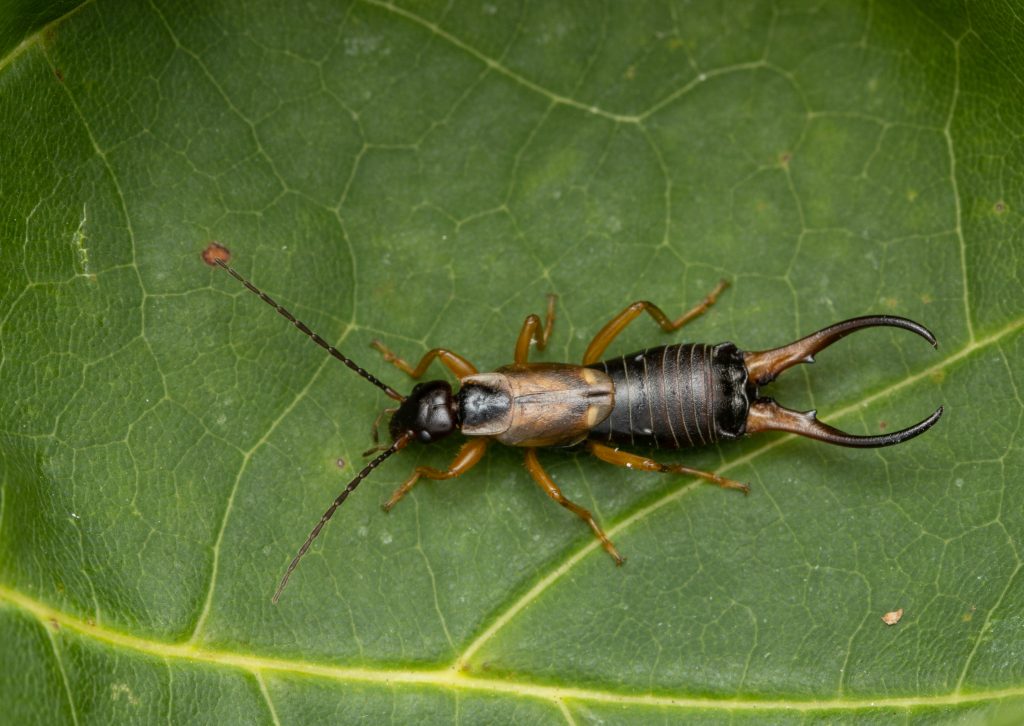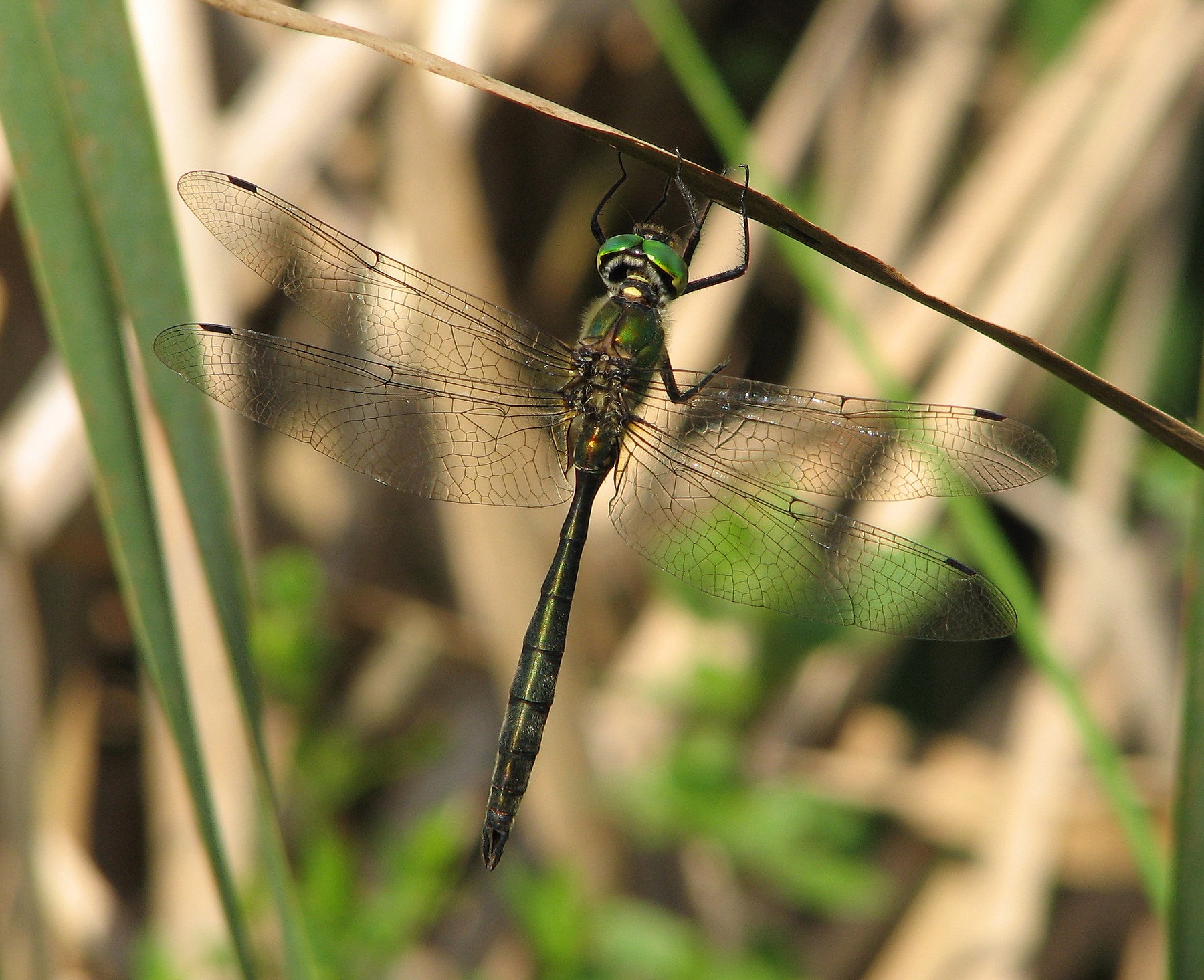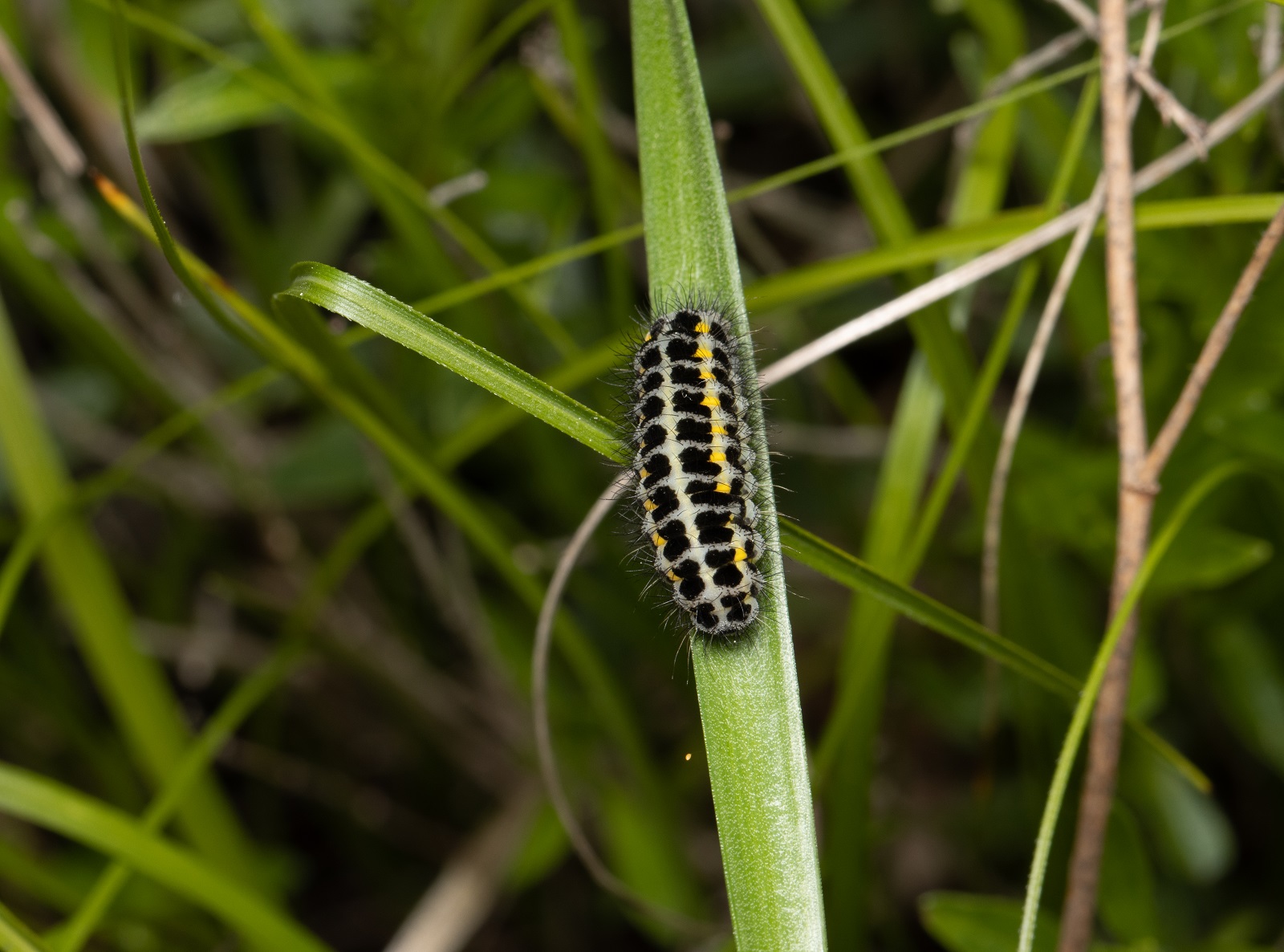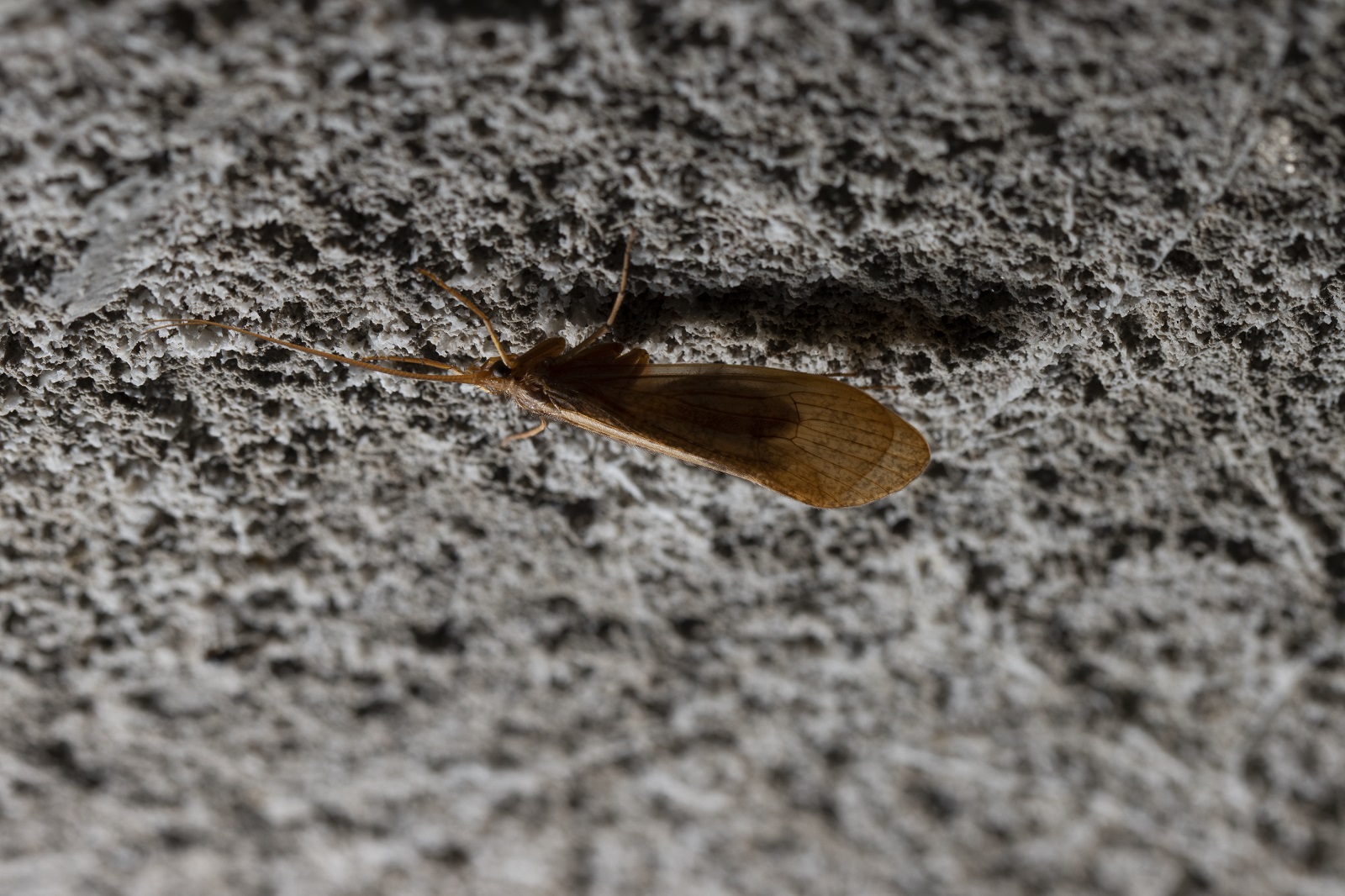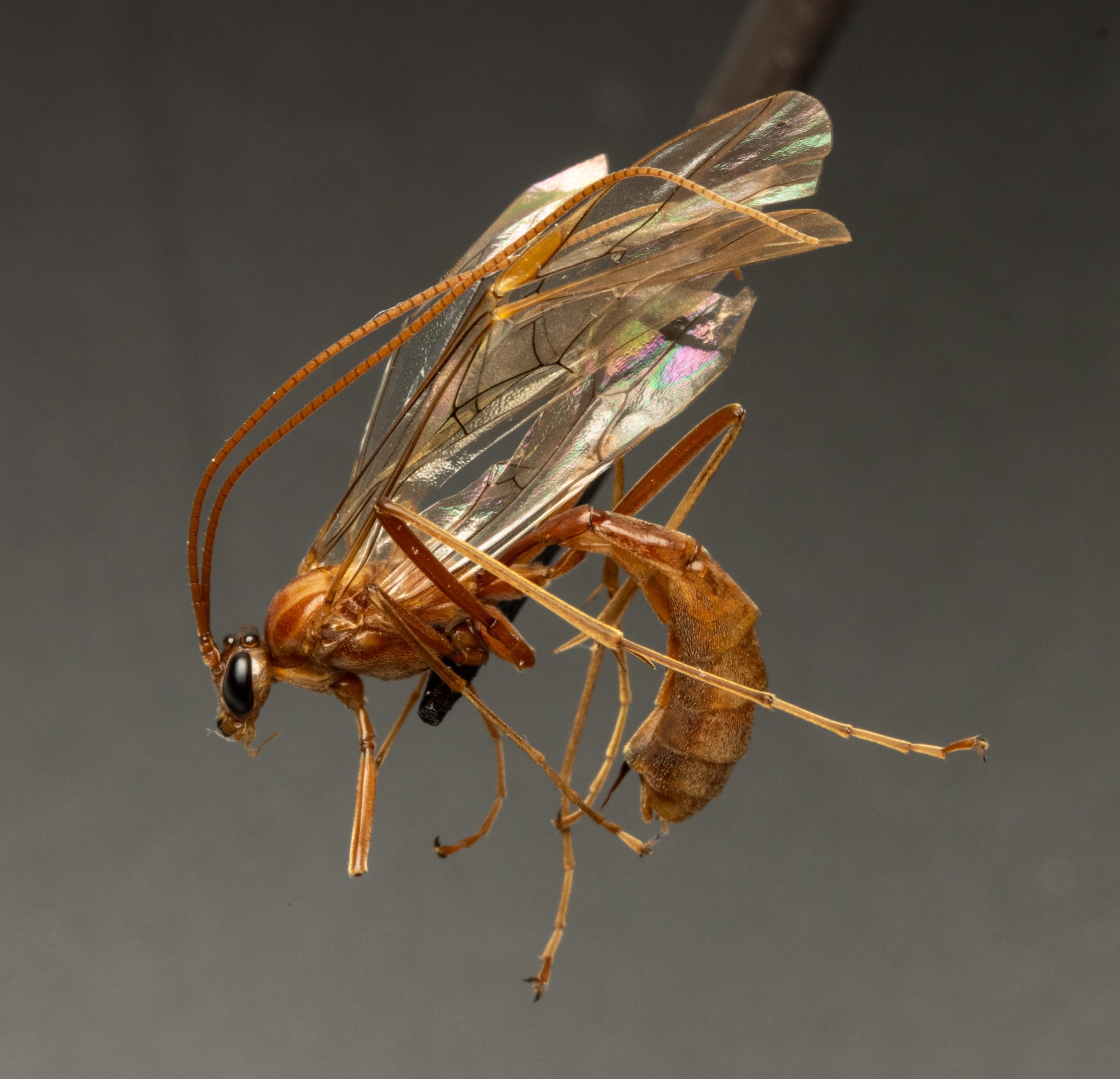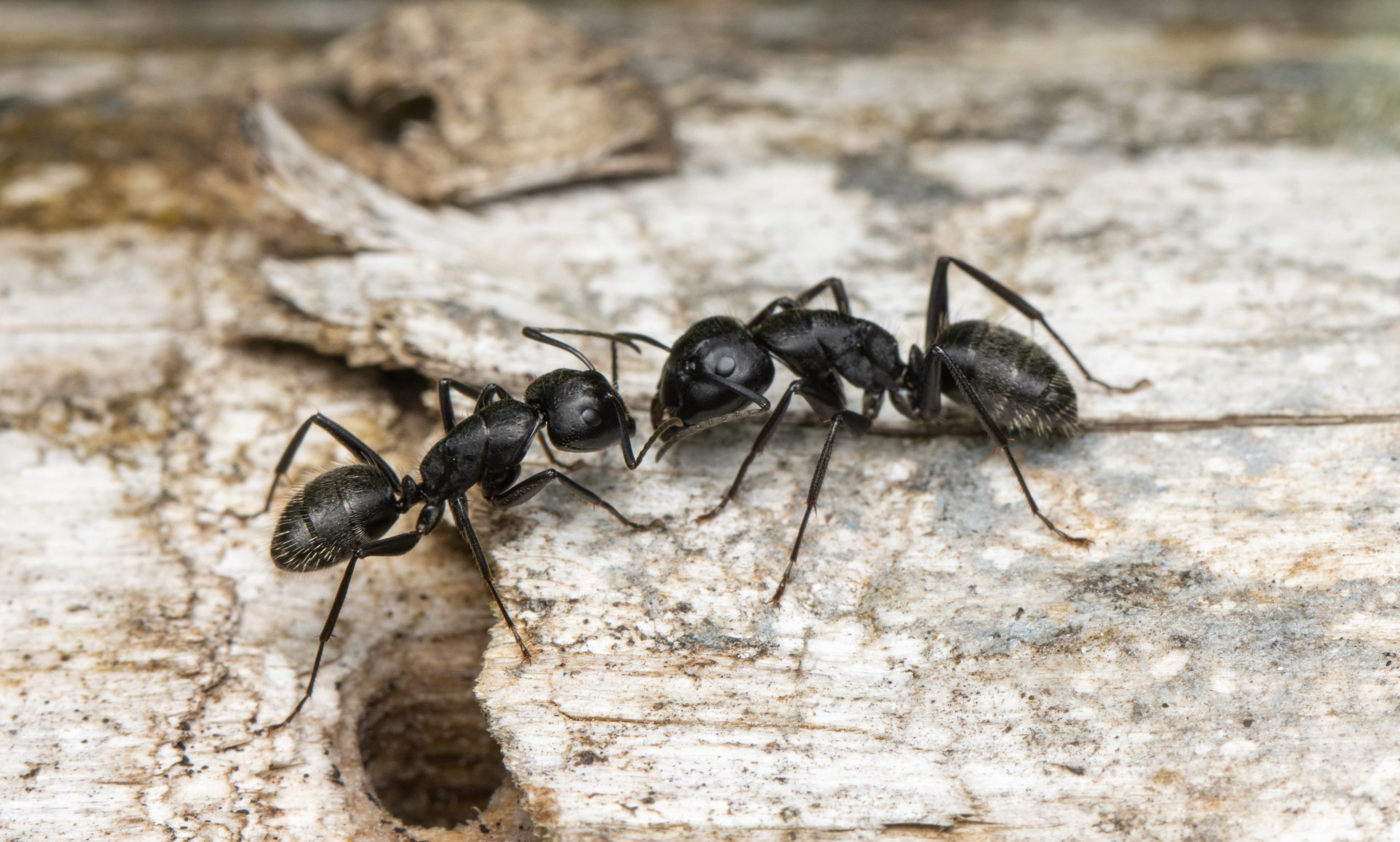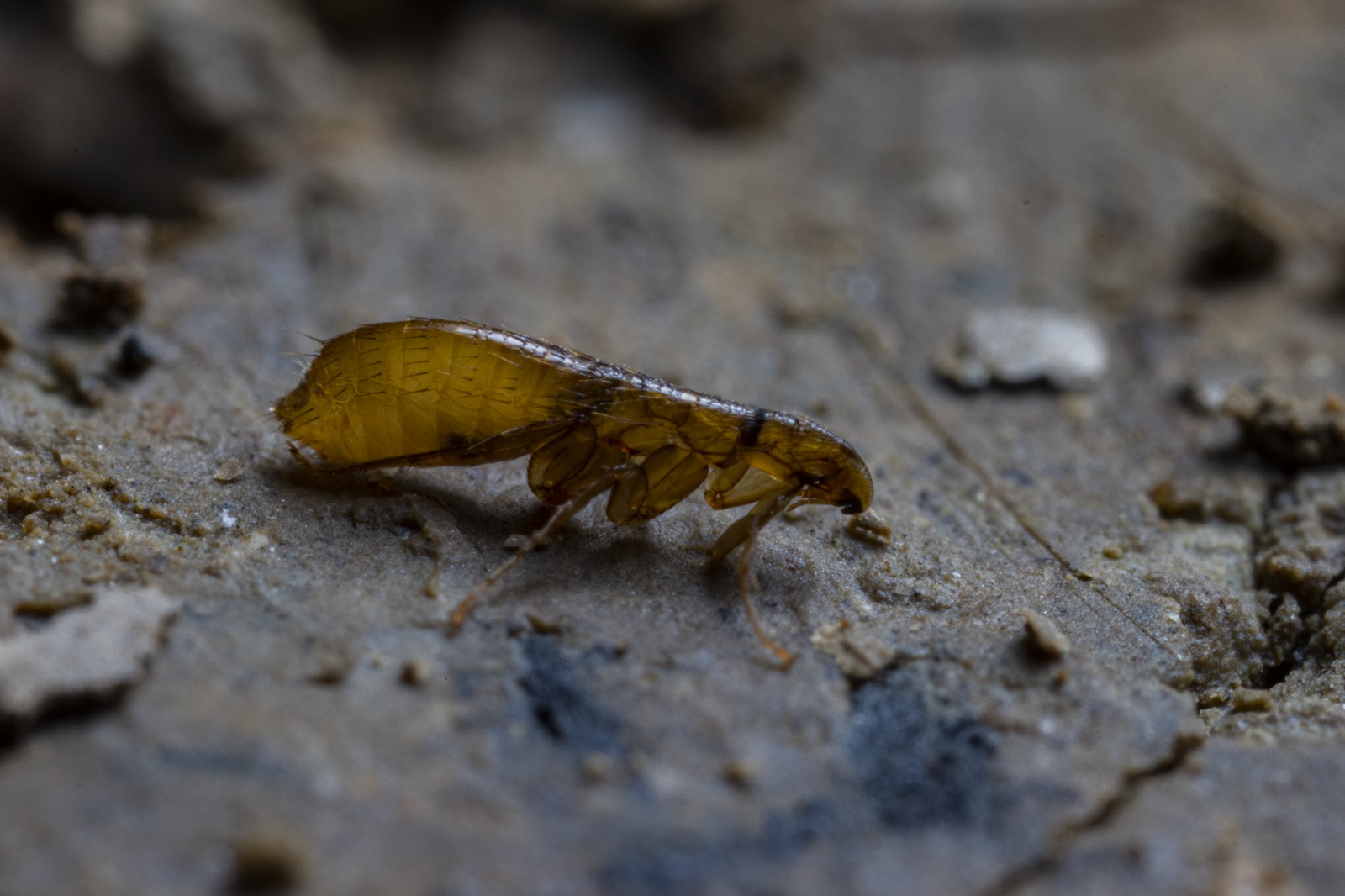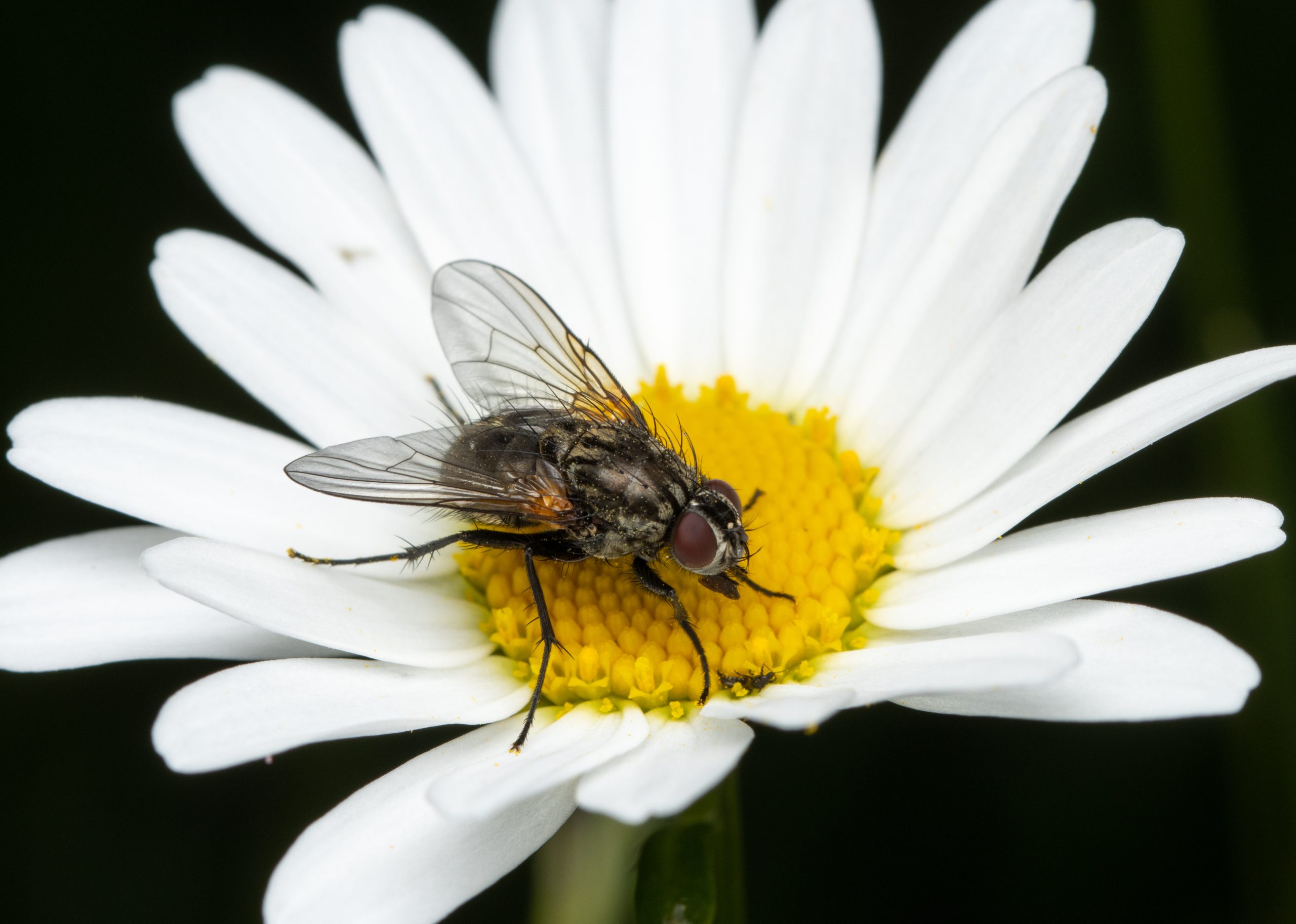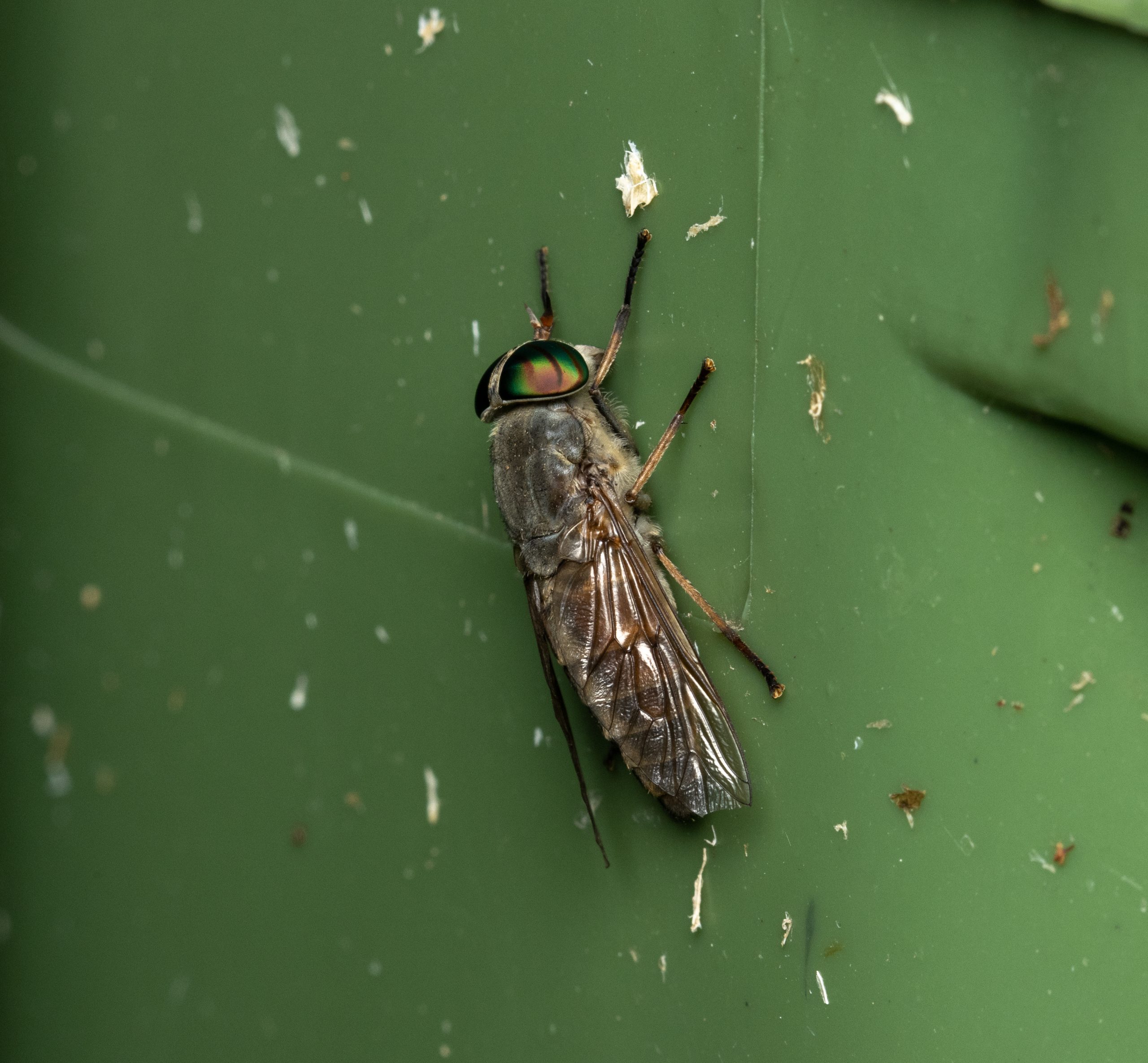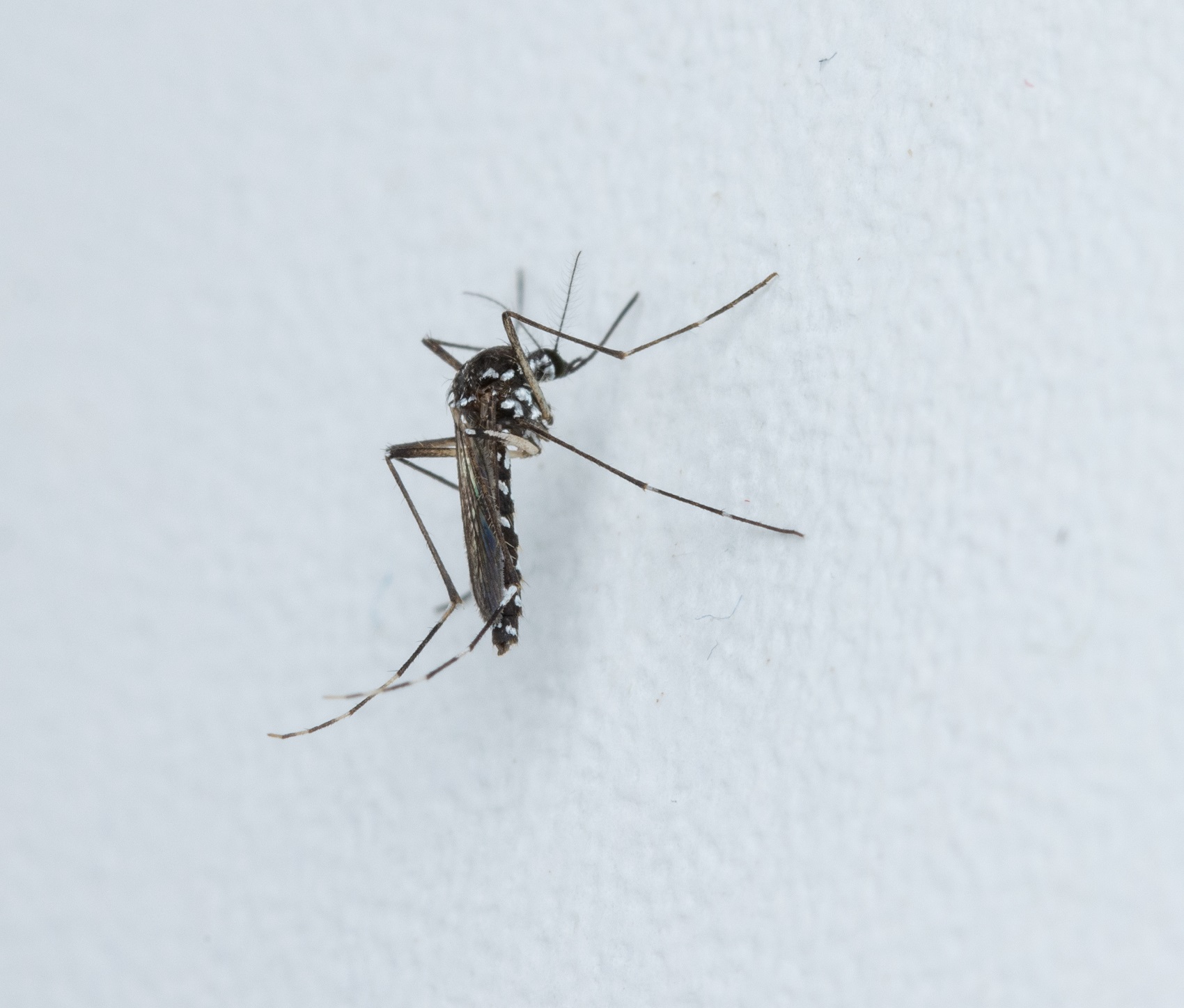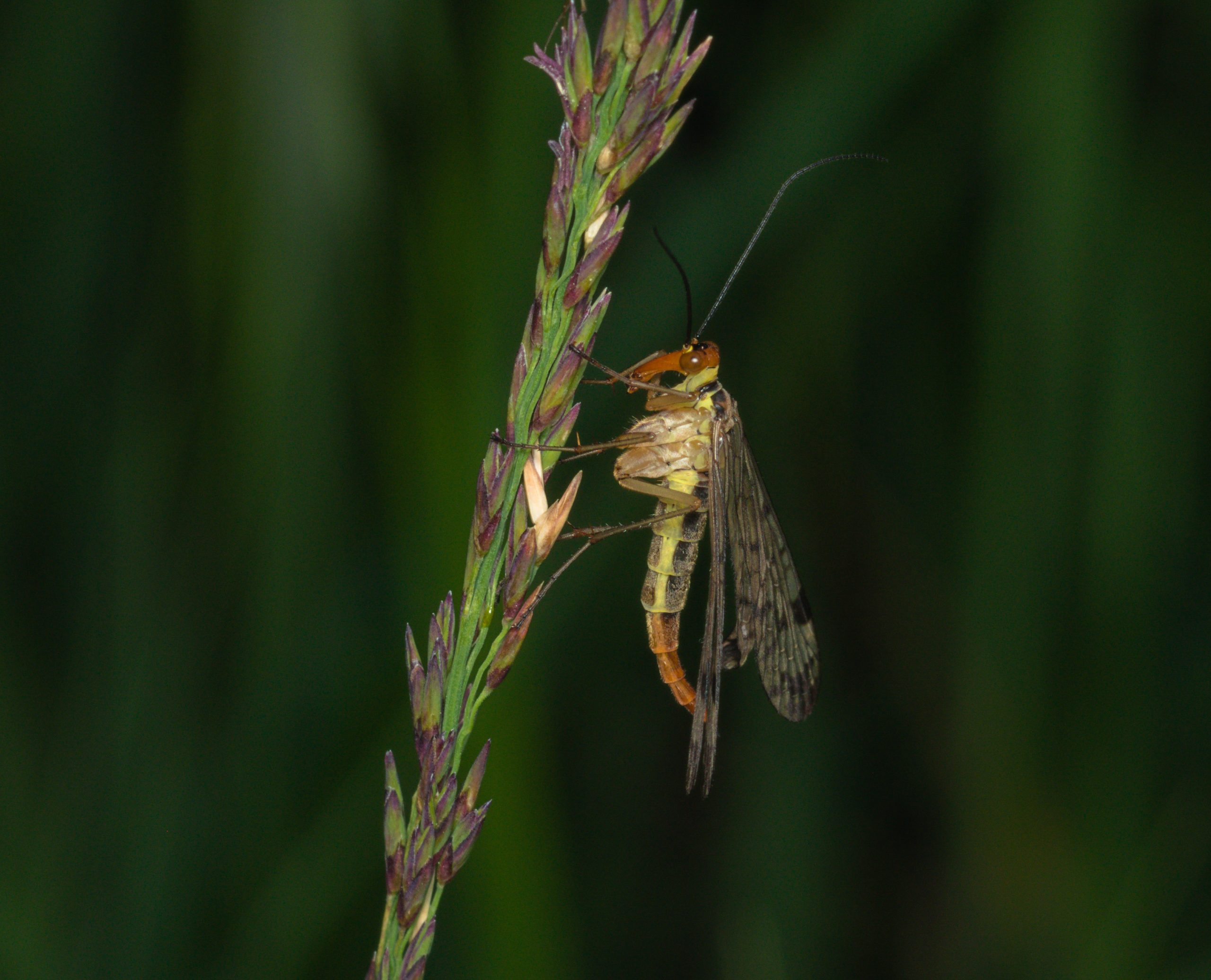- Insects
Forficula auricularia
The main distinguishing feature of earwigs is the two heavily sclerotised, unsegmented abdominal cerci which form pincers. Their body is elongated, dorso-ventrally flattened, and usually brown in color. Adults are 12–15 mm in length.
The body consists of a head, thorax and abdomen. The head includes fused acron and six segments. The mouthparts are prognathous and adapted for chewing. Antennae are of medium-length, composed of 11–14 segments. Compound eyes are small.
The thorax, like in other hexapods, consists of three segments: prothorax, mesothorax, and metathorax. Each thoracic segment bears one pair of walking legs. The dorsal side of the prothorax is covered by a relatively large tergite called the pronotum. The mesothorax bears the first pair of wings, which are short and slightly hardened tegmina. These tegmina cover the second pair of membranous wings attached to the metathorax. The second pair of wings are fan-shaped and significantly larger than the tegmina, requiring the earwigs to fold them multiple times to fit them under each tegmen.
The abdomen is elongated and ends with cerci shaped as pincers. In males, the cerci are curved, while in females, they are straight or only slightly curved at the tip. Earwigs use their pincers for grasping prey, defense, and aiding in the folding of their wings. In males, the cerci also play an important role during mating.
Earwigs are found in diverse habitats, ranging from forests and meadows to human dwellings. They are primarily nocturnal. During the day, they hide in cool, moist, and hard-to-reach places, such as crevices between and beneath stones, under bark, in leaf litter, and other similar environments.
The second pair of wings allow for flight; however, earwigs are poor fliers and rarely fly. The main mode of locomotion is walking with their thoracic legs. Common earwigs mainly feed on plant material and decaying vegetation, though they occasionally prey on smaller invertebrates, such as aphids.
Mating involves a complex courtship ritual, followed by copulation. Mating occurs in autumn, after which the female lays around 50 eggs in a small underground chamber, where she also overwinters. Female earwigs care for both the eggs and the juvenile stages, known as nymphs. The nymphs hatch in the spring and reach sexual maturity after five moults. When the nymphs from the first brood mature, the female may lay another batch of eggs in the same year.
More photos
More info
Related arthropods

Authors
- Urban Bogataj,
- Gregor Bračko,
- Teo Delič,
- Cene Fišer,
- Žiga Fišer,
- Rok Kostanjšek,
- Rudi Verovnik,
- Miloš Vittori,
- Valerija Zakšek.
Students Vito Ham, Vesna Jurjevič, Gaj Kušar, and Adrijan Samuel Stell Pičman also participated in the project.
